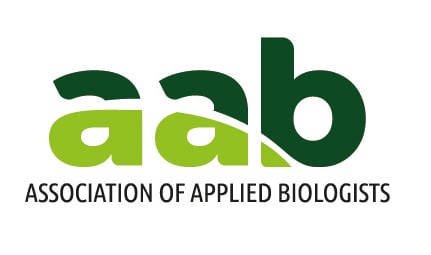Journal list menu
Export Citations
Download PDFs
Editorial
Full Access
full
Advances in differentiation and classification of phytoplasmas
- First Published: 09 April 2012
Full Access
full
Identification of two new phylogenetically distant phytoplasmas from Senna surattensis plants exhibiting stem fasciation and shoot proliferation symptoms
- First Published: 17 November 2011
Full Access
full
The groEL gene as an additional marker for finer differentiation of ‘Candidatus Phytoplasma asteris'-related strains
- First Published: 02 May 2011
Full Access
full
Multiple gene analyses reveal extensive genetic diversity among ‘Candidatus Phytoplasma mali’ populations
- First Published: 21 February 2011
Full Access
full
A new phytoplasma associated with little leaf disease in azalea: multilocus sequence characterization reveals a distinct lineage within the aster yellows phytoplasma group
- First Published: 29 March 2011
Full Access
full
Surveys reveal the occurrence of phytoplasmas in plants at different geographical locations in Peru
- First Published: 13 July 2009
Full Access
full
New 16Sr subgroups and distinct single nucleotide polymorphism lineages among grapevine Bois noir phytoplasma populations
- First Published: 25 February 2009
Full Access
full
Multigene analysis for differentiation of aster yellows phytoplasmas infecting carrots in Serbia
- First Published: 25 February 2009
Full Access
full
Characterisation and phylogeny of a phytoplasma inducing sandal spike disease in sandal (Santalum album)
- First Published: 12 December 2008
Full Access
full
Phytoplasma from little leaf disease affected sweetpotato in Western Australia: detection and phylogeny
- First Published: 15 June 2006
Full Access
full
Universal and group-specific real-time PCR diagnosis of flavescence dorée (16Sr-V), bois noir (16Sr-XII) and apple proliferation (16Sr-X) phytoplasmas from field-collected plant hosts and insect vectors
- First Published: 28 November 2005
Full Access
full
Ability of Reptalus quinquecostatus (Hemiptera: Cixiidae) to inoculate stolbur phytoplasma to artificial feeding medium
- First Published: 12 December 2008
Full Access
full
Study of the transmission of stolbur phytoplasma to different crop species, by Macrosteles quadripunctulatus
- First Published: 23 January 2008
Full Access
full
Seasonal infectivity of Cacopsylla pruni, vector of European stone fruit yellows phytoplasma
- First Published: 16 March 2005
Full Access
full
Lethal yellowing-type diseases of palms associated with phytoplasmas newly identified in Florida, USA
- First Published: 29 July 2008
Full Access
full
A new phytoplasma detected in the South Australian native perennial shrub, Allocasuarina muelleriana
- First Published: 16 March 2005
Full Access
full
Phytoplasma distribution in coconut palms affected by lethal yellowing disease
- First Published: 05 June 2011
Full Access
full
Cryotherapy of shoot tips: a technique for pathogen eradication to produce healthy planting materials and prepare healthy plant genetic resources for cryopreservation
- First Published: 07 May 2009
Full Access
full
Zophiuma lobulata (Hemiptera: Lophopidae) causes Finschhafen disorder of coconut and oil palms
- First Published: 17 November 2010




